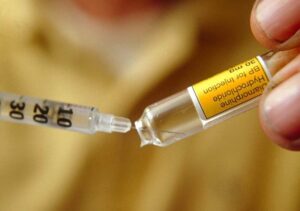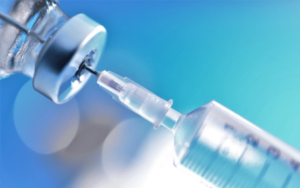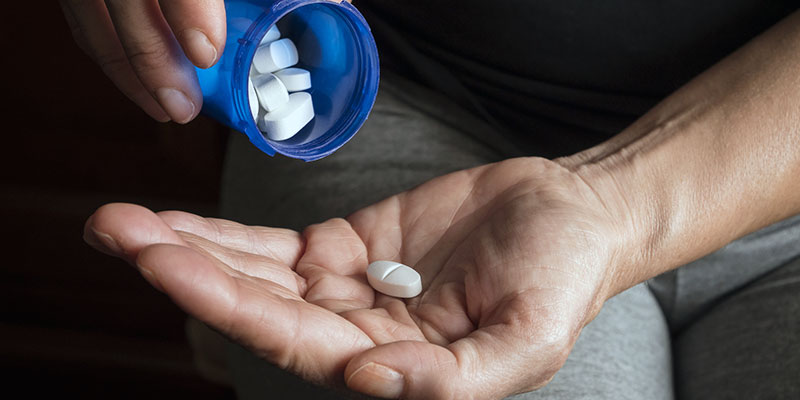In the realm of pain management, pethidine, also known as meperidine, is a potent opioid often prescribed for moderate to severe pain. While it serves as an effective analgesic when used appropriately, its misuse can lead to a perilous journey toward addiction. Pethidine addiction, like any other substance dependency, can take a heavy toll on one’s physical, emotional, and social well-being. In this blog, we delve into the nuances of pethidine addiction, exploring its causes, signs, consequences, and avenues for recovery.
Contents
What Is Pethidine Addiction?
 Pethidine addiction refers to a condition in which an individual develops a compulsive and uncontrollable urge to use pethidine. This is also known as meperidine, despite its negative consequences. Pethidine is a potent opioid pain medication commonly prescribed to alleviate moderate to severe pain. Addiction occurs when repeated use of pethidine leads to changes in the brain’s chemistry, resulting in tolerance, dependence, and cravings.
Pethidine addiction refers to a condition in which an individual develops a compulsive and uncontrollable urge to use pethidine. This is also known as meperidine, despite its negative consequences. Pethidine is a potent opioid pain medication commonly prescribed to alleviate moderate to severe pain. Addiction occurs when repeated use of pethidine leads to changes in the brain’s chemistry, resulting in tolerance, dependence, and cravings.
This often leads individuals to engage in escalating patterns of misuse, seeking the drug not only for pain relief but also for its euphoric effects. So, this addiction is characterized by a loss of control over drug use, prioritizing obtaining and using the drug over other responsibilities and activities. And continued use despite awareness of its harmful effects.
In essence, pethidine addiction encompasses a complex interplay of physical, psychological, and social factors. It is not merely a matter of moral failing or lack of willpower but rather a chronic medical condition that requires comprehensive treatment and support.
What Are The Symptoms To Know?
Recognizing the symptoms of pethidine addiction is crucial for early intervention and treatment. While the manifestation of addiction can vary among individuals, several common signs and symptoms may indicate a problem:
- Increased Tolerance: Over time, individuals may find that they need higher doses of pethidine to achieve the desired effects, as their bodies become accustomed to the drug.
- Physical Dependence: Dependence on pethidine is marked by the onset of withdrawal symptoms when the drug is not taken. These symptoms may include nausea, sweating, shaking, muscle aches, and anxiety.
- Compulsive Drug Seeking: Individuals with pethidine addiction often exhibit obsessive thoughts about obtaining and using the drug, even at the expense of personal relationships, work, or finances.
- Loss of Control: Despite efforts to cut down or stop using pethidine, individuals may find themselves unable to control their drug use, continuing to use it despite negative consequences.
- Changes in Behavior: Pethidine addiction can lead to significant changes in behavior, such as secrecy, social withdrawal, mood swings, and neglect of personal hygiene or responsibilities.
- Physical Symptoms: Prolonged pethidine use can result in physical symptoms such as constipation, pinpoint pupils, drowsiness, and respiratory depression.
- Psychological Symptoms: Individuals may experience psychological symptoms like depression, anxiety, irritability, and paranoia, particularly during periods of withdrawal or when unable to access the drug.
- Social and Interpersonal Problems: Pethidine addiction can strain relationships with family, friends, and colleagues. And, leading to conflicts, isolation, and withdrawal from social activities.
Recognizing these symptoms early on and seeking appropriate help and support is crucial. This will help in addressing pethidine addiction and facilitating the journey toward recovery.
How Many Hours Does Pethidine Last?
 The duration of action of pethidine can vary depending on several factors, including the individual’s metabolism, dosage, and route of administration. Generally, the effects of pethidine typically last for around 2 to 4 hours when administered intravenously or intramuscularly. However, this duration may be shorter or longer for some individuals.
The duration of action of pethidine can vary depending on several factors, including the individual’s metabolism, dosage, and route of administration. Generally, the effects of pethidine typically last for around 2 to 4 hours when administered intravenously or intramuscularly. However, this duration may be shorter or longer for some individuals.
Despite its relatively short duration of action compared to other opioids, pethidine can still have significant effects on the body and mind, including pain relief and potential side effects such as sedation, respiratory depression, and euphoria. Healthcare providers need to monitor patients closely when administering pethidine to ensure appropriate pain control while minimizing the risk of adverse effects.
Why Pethidine Leads To Addictive Behavior?
Pethidine leads to addictive behavior primarily caused by the drug’s potent opioid properties, which act on the brain’s reward system, leading to feelings of euphoria and pleasure. Several factors contribute to the addictive nature of pethidine:
- Neurochemical Effects
Pethidine binds to opioid receptors in the brain, mimicking the effects of endorphins, the body’s natural pain-relieving chemicals. This activation of opioid receptors not only relieves pain but also produces feelings of pleasure and reward, reinforcing drug-seeking behavior.
- Tolerance
With continued use, individuals may develop tolerance to the effects of pethidine, requiring higher doses to achieve the same level of pain relief or euphoria. This can lead to escalating patterns of drug use as individuals chase the desired effects.
- Physical Dependence
Prolonged use of pethidine can lead to physical dependence, wherein the body adapts to the presence of the drug and experiences withdrawal symptoms when its use is discontinued. These withdrawal symptoms, which can include nausea, sweating, muscle aches, and anxiety, can drive individuals to continue using pethidine to avoid discomfort.
- Psychological Factors
Psychological factors such as stress, trauma, mental health disorders, and social environment can also contribute to pethidine addiction. Individuals may use pethidine as a means of self-medication to cope with emotional pain or to escape from reality.
- Genetic and Environmental Factors
Genetic predisposition and environmental influences, such as family history of addiction, childhood trauma, peer pressure, and availability of the drug. And, can also play a role in the development of pethidine addiction.
Overall, pethidine addictive behavior is a complex interplay of neurobiological, psychological, genetic, and environmental factors. Understanding these underlying causes is essential for effective prevention, intervention, and treatment of pethidine addiction.
How To Treat Pethidine Addiction?
 Treating pethidine addiction typically involves a comprehensive approach that addresses the physical, psychological, and social aspects of addiction.
Treating pethidine addiction typically involves a comprehensive approach that addresses the physical, psychological, and social aspects of addiction.
Medical tips
The following are common components of treatment for pethidine addiction:
Medical Detoxification
The first step in treating pethidine addiction is often medical detoxification, during which the individual is gradually tapered off the drug under medical supervision to manage withdrawal symptoms safely. Medications may be administered to alleviate withdrawal symptoms and cravings. And, making the detoxification process more comfortable and manageable.
Behavioral Therapy
Behavioral therapy, such as cognitive-behavioral therapy (CBT) and contingency management, is essential for addressing the psychological aspects of addiction. These therapies help individuals identify and change maladaptive thought patterns and behaviors associated with drug use, develop coping skills to manage cravings and triggers and establish healthier habits and routines.
Support Groups
Participation in support groups, such as Narcotics Anonymous (NA) or SMART Recovery, provides individuals with peer support, encouragement, and accountability throughout their recovery journey. Support groups offer a sense of community and understanding, helping individuals feel less isolated and more motivated to stay sober.
Medication-Assisted Treatment (MAT)
For some individuals with severe opioid addiction, medication-assisted treatment may be recommended. MAT involves the use of medications such as methadone, buprenorphine, or naltrexone, along with behavioral therapy and support, to help manage cravings, prevent relapse, and support long-term recovery.
Dual Diagnosis Treatment
Many individuals with pethidine addiction may also have co-occurring mental health disorders, such as depression, anxiety, or post-traumatic stress disorder (PTSD). Dual diagnosis treatment addresses both addiction and underlying mental health issues simultaneously through integrated treatment approaches.
Aftercare Planning
Planning for aftercare is crucial for maintaining sobriety and preventing relapse after completing formal treatment. Aftercare may include ongoing therapy, participation in support groups, regular medical follow-ups, vocational or educational assistance, and other supportive services tailored to the individual’s needs.
Holistic Therapies
Incorporating holistic therapies such as yoga, mindfulness meditation, art therapy, or acupuncture can complement traditional treatment approaches by promoting relaxation, stress reduction, and overall well-being.
Overall, treating pethidine addiction requires a personalized and multidisciplinary approach that addresses the unique needs and circumstances of each individual. By combining medical interventions, behavioral therapies, social support, and holistic approaches, individuals can achieve and sustain recovery from pethidine addiction.
Conclusion
In conclusion, pethidine addiction is a complex and challenging condition that affects individuals physically, psychologically, and socially. However, with the right support and treatment, recovery is possible. By understanding the causes and symptoms of pethidine addiction, seeking professional help, and engaging in comprehensive treatment approaches, individuals can break free from the grip of addiction and rebuild their lives.
It’s essential to remember that recovery is a journey. It may have its ups and downs, but with determination, perseverance, and support from loved ones and healthcare professionals, a life free from pethidine addiction is achievable.
